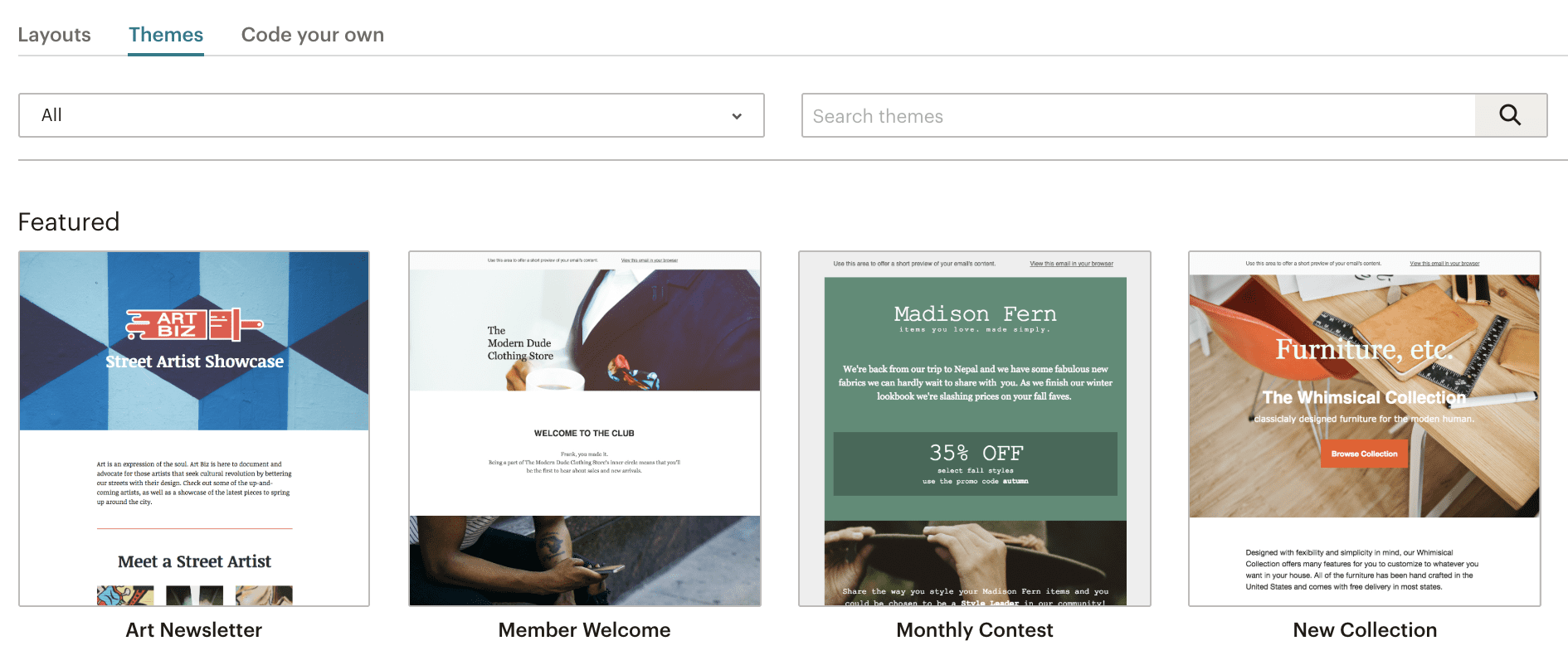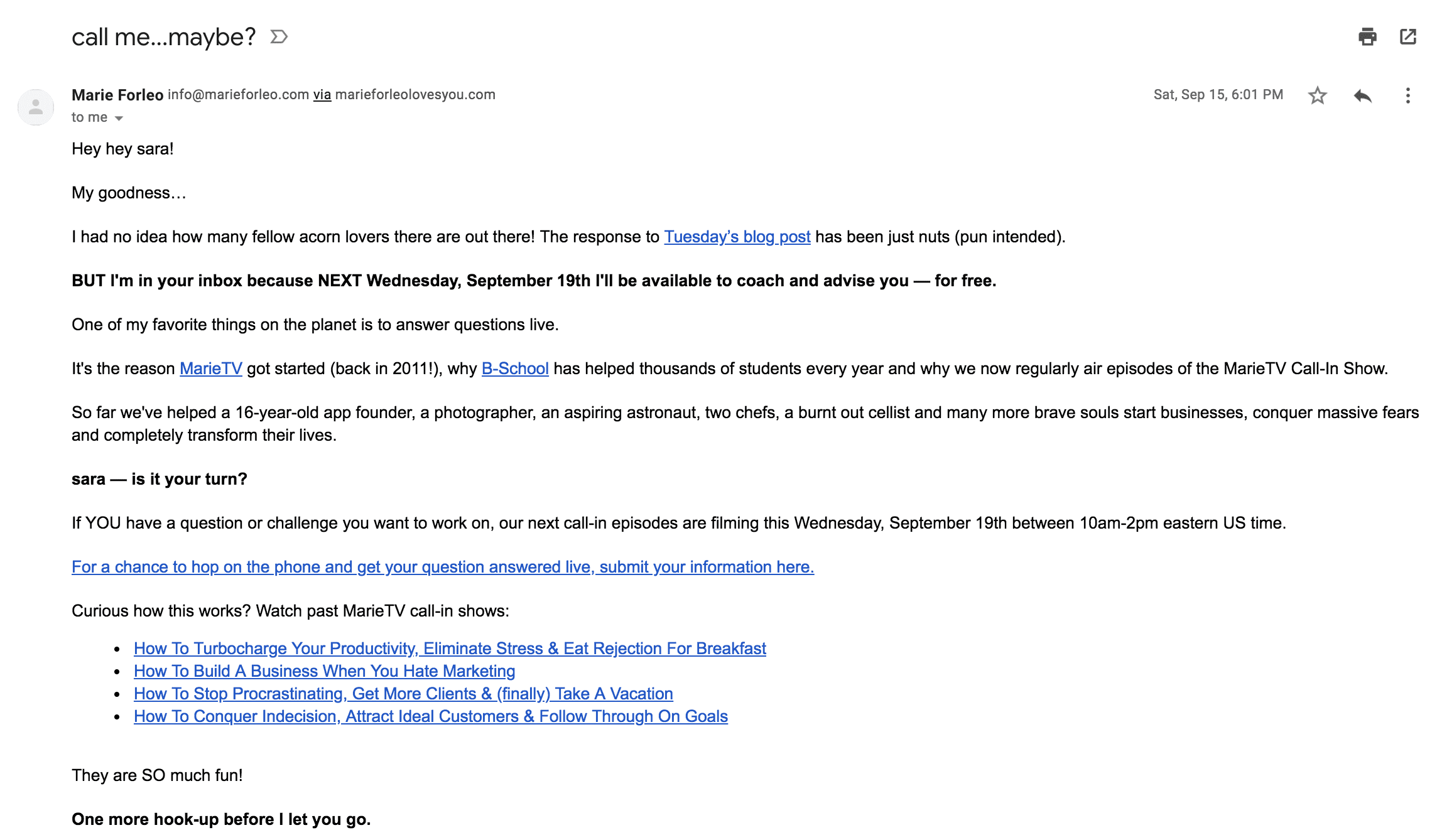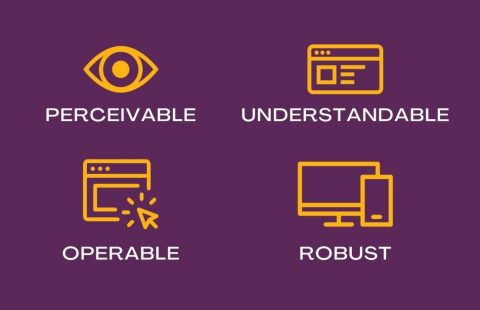9 Steps of harnessing the power of email marketing
Ah email marketing, the gift from the Internet gods that lets you reach a mass audience instantly. But just like anything else these days, you’re not the only ice cream shop on the block. You’ve got competition, and lots of it.

Together, we’ll cover the 9 steps to harness the power of email marketing, which will help your emails stand out from the herd of unread messages. But first, let’s ensure you understand the difference between email marketing/newsletters and direct emails, which we covered in detail here.
The main difference is that newsletters are targeting a larger audience and therefore written in a more general fashion. If you want to tell 10, 50, 100 or more people that you have a new product, sale, promotion, offer, it’s usually quicker to send a newsletter to everyone, rather than individual emails. There are however, ways to maintain a personal touch. A seemingly insignificant detail that’s often overlooked.
There’s one last email marketing component I want to cover before we start, and that’s just how awesome it is. On top of having the highest amount of users (reaching 4 billion), a study by Data and Marketing Association showed a 122% ROI for email – over 4x higher than other marketing formats including social media, who was next in line with a ROI of only 28%. We, and many of our clients, can also attest to a ROI than any other marketing tool. And we know you want those results as well, so let’s jump into it and develop your golden strategy!
1. Choose your newsletter tool
Unless you have a deep need to meddle with coding, you’ll want to choose a user-friendly tool to send your newsletters. Luckily enough, there are many email marketing tools available for the small and large business’.
The tool we use and can vouch for MailChimp. MailChimp has an amazing free plan, that allows you to send up to 12,000 emails per month, to 2,000 subscribers. If you plan on going above this, there are very reasonable priced plans. MailChimp is extremely user-friendly yet can create powerful and beautiful custom newsletters, plus has a snazzy organization set up and offers all the analytics you need to measure the success rate.
There are many other email marketing softwares such as ActiveCampaign, Constant Contact, HubSpot, to name a few. Make sure you choose one that best fits your budget and provides a good amount of features such as embedded forms for your website (so that people can sign up via forms and be automatically added to your list), the ability to create groups for segmentation, and a few other elements we will describe in the next steps. Best to get the full picture of this article before making your choice.
2. Build your email subscriber list (THE LEGAL WAY)
You’ll probably need some subscribers for your emails to be relevant. I hate to be the email police, but I have to make something clear. Emailing your clients is actually different than emailing people who have subscribed to your newsletter.
Essentially, your goal is to get explicit consent from every person on your subscription list. That’s only obtained when they check some kind of box that says ‘yes send me marketing emails’ or enter their email in a subscription box where it’s crystal clear that they’re signing up for your newsletter. Based on the CASL – Canada’s Anti Spam Legislation, your clients fall into an ‘implicit’ category of consent. You may have their email, but they didn’t say they wanted marketing emails (which as said in the intro, is different from direct emails).
This implicit consent gives you a window of 2 years after the DOP (Date of purchase) to email them and get explicit consent. During that time, you’re expected or encouraged to use strategies that will get them to give you explicit consent, such as contests, or a simple witty email that says hey click this box so we can email you forever or until you unsubscribe (but in a better way).
Bottom line, make sure everyone on your list said yes to marketing so you can avoid nerdy email lawsuits.
3. Organize your subscribers into ONE list
One mistake that we commonly see with people using newsletter systems like MailChimp is managing multiple lists. Your subscribers may have different interests or characteristics that would encourage you to email them for seperate announcements or products/services.
Let’s say you have a clothing store and want to send an email to just the ladies about new women arrivals. It might make sense to have a men’s list and women’s list. However, there can be instances where one person is in more than one list and errors can occur. Let’s say you want to target women in a specific location only, so you choose your ‘Women’ and ‘Ottawa’ list. Well now you have an issue because there may be women in the ottawa list that would now receive the email twice because they are present in both lists.
The best way to organize your subscribers for mailchimp, is having ONE list, with sub-groups that are divided based on various characteristics and interests. Let’s talk more about that next.
4. Create groups to segment people
Creating groups within your one list helps to get around the issues of multiple lists without losing the ability to segment and send targeted emails. With the preceding example of women in Ottawa, you could create 2 groups with subcategories.
Gender:
- Male/Man
- Female/Woman
- Rather not say
Location
- Ottawa
- London
- Toronto
- Montreal
The ‘gender’ and ‘location’ are the groups, and below them are the subgroups. If you wanted to target women in Ottawa you would include the women under ‘gender’ and ‘ottawa’ under location. This would include all the women in Ottawa without any duplicate emails.
Moving forward, you will be able to set subscription forms or links to sync the information into your newsletter tool and organize new subscribers into the appropriate groups.
5. Tackle some content ideas & create a plan
Create a simple table and jot down some ideas for each month.
Let’s say your name is Alvin, and you own eco-friendly pet food stores in Ottawa, London and Kingston. You can start making a list of items that you might want to share with your subscribers.
| Month | Content |
| November | Arrival of EcoLife Cat Mix in London stores.
Version 1 – London Version 2 – (product coming soon) to people in Kingston and Ottawa |
| December | Arrival of EcoLife Cat Mix in Ottawa & Kingston (IT’S HERE email) |
| January | Discount offered if you refer a friend (only London) |
You can also set up automatic reply emails within your newsletter system, that can be used to welcome new subscribers, send them a freebie, or welcome new clients through your purchasing system, and inviting them to subscribe to your newsletter.
Once you have your ideas, you can create drafts of specific newsletters, but first you should think about how you will say things.
6. Draft up (remember personal always wins)
We can quickly differentiate emails that are written with personality and spunk, from those that are corporate and ‘safe’. This obviously has a way bigger root, and it stems from your overall branding strategy and approach. But it’s never too late to write with flair, and sweep the boring in the dustbin. You can use humour, speak with relatable words and avoid jargon, and even add GIFs and images to spice it up with visuals.
On top of being ‘interesting’ and having personality, you should consider WHO is writing. Is it the company or a person? Many companies are now choosing to write from a first person point of view. You’ll receive an email from Uber lets say, speaking from a first person perspective and signed by the CEO. This creates a ‘human’ feel and allows the reader to feel like they are speaking with someone, and not being spoken to.
Lastly, you can get personal with your newsletter groups, by targeting certain areas of interest. But also, by doing things like adding names in the subject line, greeting, or throughout the body. Most newsletter systems offer plenty of ‘merge tags’ which allow you to add things like individuals names throughout your email. Statistics show that personalized emails have a 14% increase in CTR (click-through-rate) and 10% increase in conversion, and personalized subject lines see a 26% higher open rate.
Queen B said it best in the 90s -> Say my name, Say my name.

7. Choose a design (less might be more)
You have your ideas, your drafting content, your thinking about your tone and personalization, but what about the design? Just like giving a presentation, people are affected not only by what you say, but how you say it. In a newsletter, the design has a big impact on the how.
There are many ways to ‘style-lize’ your newsletter. The newsletter system you choose may even offer templates and themes like MailChimp does:

Now, if you think like me, your intuition may not be the best decision maker. I was positive that the best newsletters were polished and boxed into this perfected presentation. Until one day, I realized my favorite subscriptions were written in simple text format. And that these subscriptions were coming from email marketing gurus such as Marie Forleo:

Could it be, that the most effective designs are this simple and casual? Well, I certainly wouldn’t say that there aren’t many high-performing newsletters with a proper logo, banner, and ‘professional’ format. But if you think your format clutters your newsletter and keeps it from conveying value, you can choose to simplify the design like Marie. Using the plain-text look can make readers feel like you’ve sat down at a keyboard to write for them.
Keep in mind, that all your emails don’t have to look exactly the same. Depending on the content, it might be appropriate to send a simple text email, and other times you can send more ‘polished’ versions. There really isn’t ONE solution, it’s about trying new things and seeing what works for you and your audience.
8. Send your newsletter – at the right time
If you’re a local company, this step will be easier than if you’re speaking with people across various time zones. You should consider when your readers want to receive and read an email. Again, common sense might tell you that the best time to send an email newsletter is during the day or in the morning. Turns out people like to read in the evening before they go to bed. This makes sense really, they have more time to poke around their inbox than during the rushed commute to and from work. But if your clients are older lets say, or stay-at-home moms, you might want to play with other times and test what works best for your audience.
9. Measure your campaigns & adapt
Lastly, it’s always a great idea to look at the analytics of your newsletters. What was the open rate? What was the click through rate on your links? These numbers can give you insight as to whether or not you’re segmenting your lists properly or even writing relevant content to the groups. Or whether your headliner was juicy enough by observing the open rate. It is of course a bit of a guessing game when it comes to ‘why’ but it still provides some insight.
Just like anything in life, email marketing requires some TLC and dedication. You’ve got to start somewhere and hopefully these 9 steps will help you hone in on your strategy. If you feel stuck or think this is all too time consuming, reach out to us and we’ll help you achieve your goals.






